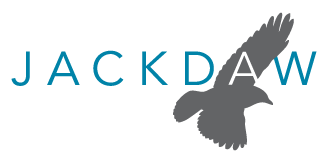Apple today announced new versions of iOS and Mac OS X, along with a new development language for both operating systems and a large number of additional features and APIs for developers. The following comment may be attributed to Jan Dawson, Chief Analyst at Jackdaw Research. Jan can be reached at jan@jackdawresearch.com or (408) 744-6244 for further comment.
Apple’s approach to cross-device integration in contrast to Microsoft’s
Apple’s approach to integration between Apple devices, which it calls Continuity, is in stark contrast to Microsoft’s. Apple is focused on a common user experience across devices, whereas Microsoft has focused on a common user interface and code base. So far, Microsoft’s approach has felt forced, layering a touch interface onto its PC operating system, whereas Apple’s approach feels more natural and useful. It’s also the kind of thing only Apple, with its tightly integrated approach to hardware, software and services, could pull off.
Replacing Google in its last stronghold on the iPhone – search
Over the last two years, Apple has been removing Google from core parts of the iOS experience, with Google Maps and YouTube being the obvious steps taken last year, though Google continues to be the default search provider in Safari on iPhones. However, while Apple has no chance at replacing Google as a search engine in its entirety, it has also spent the past couple of years slowly inserting itself as an intermediate search engine on iOS. This started with Siri but is now continuing in both iOS and OS X with Spotlight search incorporating web search results. In many cases, users of Apple devices will now find answers to their questions without ever entering a traditional search into a web browser. Even the browser address bar will now serve up search results from other sources before the user hits enter. This is an enormous step forward in Apple’s removal of Google from its last bastion on the iPhone, and could have a significant effect on Google’s mobile search business.
Increased openness to third parties a shift in tone
Just as Apple is stripping Google of its roles on Apple devices, it’s actually opening up opportunities for other third parties throughout its ecosystem. The integration of Box and OneDrive as storage options, the inclusion of third-party widgets in the Notifications area on OS X and iOS, the whole Extensibility concept and third party keyboards are all big advances in Apple’s openness to third parties. This is a healthy recognition on Apple’s part that it can’t possibly do everything, and that the iOS experience has been unnecessarily limited by Apple’s relatively closed approach to third party integration in these various areas. This may partially neutralize one of the main attractions of Android, which is the much greater openness to these third party services, although on Apple devices it’s being done in a way that’s very security-conscious, sharing very little data between apps and developers.
Swift, Metal, CloudKit, HealthKit, Touch ID integration and more mean a boon for developers
With so many user-focused announcements, it would be easy to forget that WWDC is Apple’s developer event. But the last half hour of the keynote was also enormous for developers, with a new programming language and lots of new APIs. Developers now have new ways to create value around Apple’s operating systems and the Apple ecosystem as a whole. The mood in the keynote haul was enormously positive around these changes. The introduction of Swift, though announced with less fanfare, may be equivalent to Steve Jobs’ introduction of the original OS X in that it creates a platform for the next 15 years of Apple’s development.
HomeKit and HealthKit cement the iPhone ecosystem
Apple’s new HomeKit and HealthKit platforms promise to bring Apple’s core integration principles to third party devices in two industries which currently suffer enormously from fragmentation. Both the smart home and wearables markets are currently characterized by huge numbers of players whose products don’t talk to each other. Though others have tried, Apple is arguably the first player with the consumer pull to really make a difference in bringing these industries together in a way that makes sense for end users. Smart home adoption should be hugely boosted by Apple’s entry to the market. The healthcare industry is likely to be much slower to be disrupted, not least because the number of people who care about tracking health data is still very small. But Apple’s solution should make a big difference for the minority who do make us of it, much like the rest of Apple’s products.
For more of my pre-WWDC take on HomeKit and HealthKit, see these two blog posts:
http://www.beyonddevic.es/2014/05/27/apple-and-the-smart-home/
http://techpinions.com/apple-destroyer-of-fragmentation
